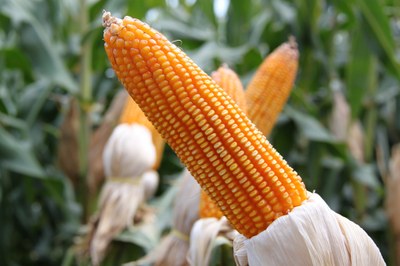Porto Alegre, November 21, 2023 – The return to competitiveness of a major global agricultural exporter? This is the first sign of the exceptional electoral result in Argentina last weekend. The change of government is not just about the political regime but an alignment with reality, with the resumption of growth, the paralysis of a model that is based on welfare support, high taxation, ignoring the productive sector and the impractical tax model. Campaign promises are not always immediately applicable, including the so-called “retenciones” or taxes on agricultural exports, but there is no doubt that changes in economic policy will emerge. The markets should focus on the next measures taken by the elected government, and Argentine growers could even increase this season’s acreage in a motivational way.
The international corn market was encouraged again to boost prices despite a record US crop and full recovery of stocks projected for 2024. One of the key points was the good weekly local exports, with almost 1.9 mln tons. This is signaling that global demand may be changing direction, that is, moving away from great demand for Brazilian corn and moving toward US corn. This becomes clearer when trading companies cope with strong difficulty in purchasing internally in Brazil.
Wheat has not been able to establish a bullish variable for corn. On the contrary, with the December contract bottom levels on the CBOT, wheat awaits a decrease in sales by Russia to bring back some price recovery. The market then found in soybeans a variable to attempt to support corn prices. In the case of the hike in soybean prices, due to two factors: the Argentine elections and the drought in Brazil brought a feeling of impact on planting decisions in the 2024 US crop. The planting bias for the 2024 crop in the United States is for a reduction in the corn acreage and an increase in the soybean acreage. With the recent rise in soybeans, the soybean/corn exchange ratio has worsened for corn. Thus, even without positive symptoms for an uptrend, corn followed the hike in soybeans to try not to worsen this exchange ratio.
Last weekend, however, the electoral process in Argentina was decided. The exceptional result shows a radical change in concepts for society and the economy. Campaign promises are not always immediately implemented, but just the change of a government that was tragic for the economy and agribusiness is already a clear motivational symptom for the productive sector.
In recent weeks, we have noticed a sharp high in soymeal prices on the CBOT. The main factor behind this high was the halt in sales by crushing industries in Argentina. With the exchange rate frozen and an electoral process ahead, industries halted soybean imports and, consequently, paralyzed the supply of meal on the international market. The market rushed to the natural protection of CBOT futures contracts. In the case of corn, there is not enough supply to increase the volume of exports before the March harvest. In the soybean complex, industries need to be confident in the new rules of the game to import and resume crushing.
At this point, the beneficial effect of Argentine political change may take some time yet. As the promises of change are aggressive, the markets tend to await the inauguration of the new President, the measures to restore the local economy, the bias of Congress, and the effects on the exchange rate and market rules. For example, one of the promises is to eliminate the fifteen types of exchange rates that currently exist in the economy and resume the relationship with the external environment (creditors). The other is to eliminate the “retenciones” or export taxes in the agribusiness sector. These taxes have existed since 2000 and exert cash power for the government and may still take a while to be reduced or even eliminated.
Perhaps, for this reason, markets await the first decisions of the new government, while the old government is still in place. Therefore, the local industry may still take some time to resume soybean imports and reactivate soymeal exports. If this is one of the indicators that support soybeans on the CBOT, this could also avoid immediate pressure on corn prices.
Apart from this question of time for changes to emerge, the fact is that Argentina will return aggressively to the international market with its exports. The prospect of economic reformulation, exchange rate simplification, and removal, even if gradual, of export taxes could lead local growers to be motivated about the 2024 crop. The planting window runs until January. Therefore, deciding to increase the corn and soybean area this season is still possible. Argentina tends to regain its export capacity in the international market, and this can be considered bearish for markets in 2024.
Other indicators last week were related to the sharp decline in oil prices and the devaluation of the dollar against other currencies. Without a rise in oil, there is little strength on the ethanol side to support corn prices. The devaluation of the dollar tends to help commodities as long as it is not a recessive signal. The yuan in China remains quite devalued and still does not help the prices of the main grains bought by this importer.
Follow the Safras Agency on our website. Also follow us on our Instagram and Twitter and stay on top of the main agribusiness news!
Copyright 2023 – Grupo CMA

